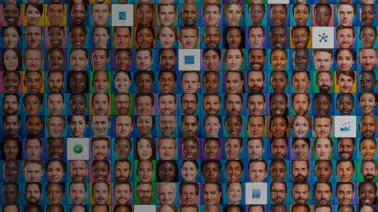It’s said that “modern problems require modern solutions.” This becomes more relevant in the age of COVID-19 when the world has come to a standstill and everyone is living a new normal.
When it comes to Udacity grads, they take this adage very seriously. In one of our previous stories, we featured Tiago who is making working from home easier through his web App – crushingWFH.
In this post, we will profile two Udacity Alums — Axel and Richard — who are using deep-learning capabilities to innovate the healthcare sector.
From Lawyers to IT Professionals
Axel and Richard have been professional lawyers in Hungary, but that didn’t stop both of them from pursuing careers in the technology field.
They both took the time to evaluate which courses would be ideal for them. And, due to lack of availability of good and practice-oriented deep learning training in Hungary, they selected Udacity to get the necessary programming skills.
Alex and Richard were able to qualify to receive Udacity scholarships, and have graduated with multiple Nanodegree programs, such as:
- Intel Edge AI Scholarship Foundation Course
- PyTorch Scholarship Challenge
- Deep Reinforcement Learning Nanodegree program
- Deep Learning Nanodegree program
- Android Developer Nanodegree program
- Computer Vision Nanodegree program
- Secure and Private AI Scholarship Challenge from Facebook.
As they say “Some people wonder why lawyers change their career to IT. We don’t know why others do it but our reason was to have more challenges in our life. There are some common methods in law and deep learning. For example, a good dataset is just like a good lawsuit, it should be defensible from every point of view.”
Their common programming experience spans for 5 years now. They worked on some projects in various programming languages like python, C++, SQL, PHP. “The biggest step in our progression was to change to deep learning 2 years ago,” they said.
Deep Learning for the Current Pandemic Situation
Both of them are currently working on three different initiatives closely related to COVID-19 disease, as well as another initiative that is not only related to this current pandemic but also gives insight into improving healthcare.
A Map to Visualize COVID-19 Related Data
At the beginning of the coronavirus pandemic, they decided to use their knowledge to give something to the community.
Their first project was to visualize COVID-19-related data to help other data scientists get a more accurate understanding of the l state of the disease.
“We found the European Centre for Disease Prevention and Control (ECDC) webpage where daily data is provided about some important numbers. We made a simple map with SVG and an SQL database background from that data,” said Richard. You can see the map here.
“A lot of people used our daily provided datasets so we decided to write a download helper software in Python. This is a little program to download the actual daily dataset and load it into a Pandas data frame. We provided an executable version of downloading software. Researchers are able to download the latest dataset with only one click: running the executable version. It might not look like a big task but it solves a real-life problem.”
Developing a Pulmonary Analytic Software
Their passion for the healthcare sector made them go a step further. They searched for datasets to help the fight against COVID-19 with deep learning in the front line.
They found that pneumonic analysis is the field where deep learning can help doctors, and decided to develop pulmonary-analytic software. Axel and Richard found various datasets but they only had a few images about COVID-19 infection.
“Finally we decided to make a more complex software which will be useful after the pandemic, too. The software’s name is cheXrad and it can analyze PA x-ray images.”
The software consists of four different modules. One module sometimes contains more deep learning models. The software results in a complex evaluation of the image.
- First, it shows the percentage of “no findings” — “not healthy” scale
- Then it shows the probability of bacteria or virus infection
- The third module informs about the probabilities of various illnesses: Infiltration, Effusion, Atelectasis, Nodule, Mass, Pneumothorax, Pleural thickening, Consolidation, Emphysema, Fibrosis, Pneumonia, Edema, Hernia, and Cardiomegaly. Cardiomegaly is not a pulmonary illness but it can be classified on the images.
- Finally, the fourth module can be used to show the result of the current disease like COVID-19.
During this project, we learned a lot about how to train hard models with low hardware environments. Our software can identify more pulmonary illnesses now. Our goal is to reach the official use of this software in healthcare worldwide.
Repository: https://github.com/hyperrixel/cheXrad
Going Beyond COVID-19: DoF for Fast & Secure Data Sharing
Axel and Richard have been working on larger projects in the healthcare domain as well.
For instance, hospitals and healthcare centers often use low-end computers with very limited computational resources, and hence the training process is a challenge.
They made a new method to help accelerate training and store the data in smaller sizes. There is an additional problem with working health data. These data contain sensitive personal information. “So we created a secured method. This project got into the top 89 projects at #BuildforCOVID19 COVID-19 Global Hackathon — 1,561 projects of 18,000 people from 175 countries participated in the competition,” said Richard. The competition was supported by the World Health Organization, Chan Zuckerberg Biohub, and other health partners too.
It is secure since headless deep learning networks anonymize the unique element of the original dataset.
Finally, they packed up the result of a headless pretrained model with an information layer where the preprocessors, which save the output, are able to store useful data, notifications, suggestions like contact information, the source of the original dataset, the way of preprocessing and many others. This opens up a new way to cooperation between the dataset maker and deep learning developers.
Repository: https://github.com/hyperrixel/dof
“In the COVID-detection we use a headless ResNet model. We heard about the technique to cut the last layers from a pre-trained model and swap it with a new one in one of the lectures from our Udacity Nanodegree program. This was the base concept of our training idea,” added Richard.
What’s Next?
Well, our grads are surprising us by the depth of their work. Is artificial intelligence, deep learning, and machine learning the new normal that the healthcare professionals are looking for? Well, maybe!
Want to share how you’re helping manage this pandemic? Share your story here.
If you are passionate about the possibilities that technology holds in the healthcare sector then do register for our upcoming virtual conference on AI for Healthcare.



